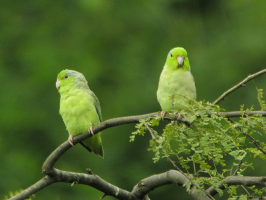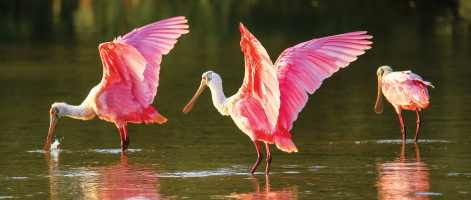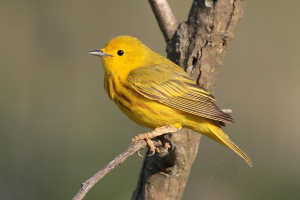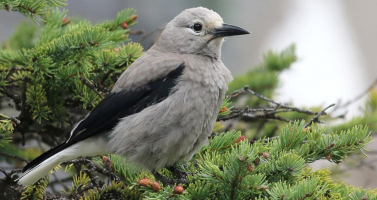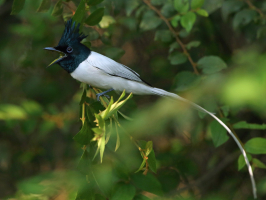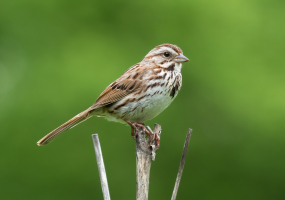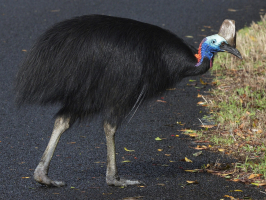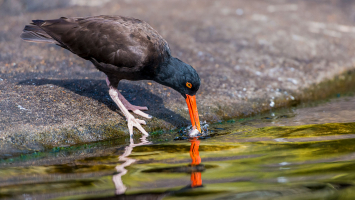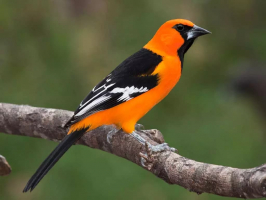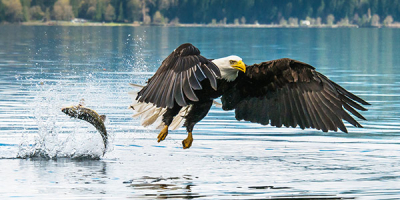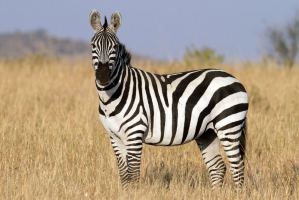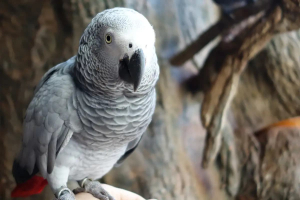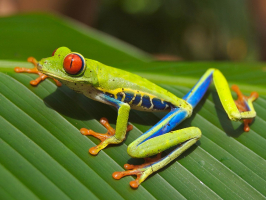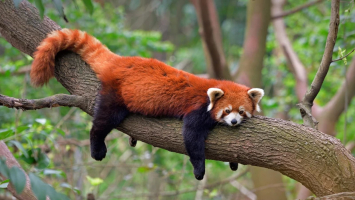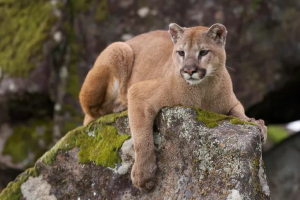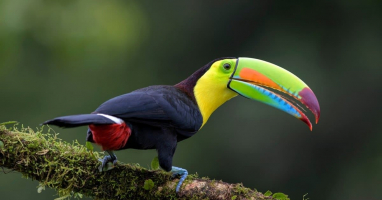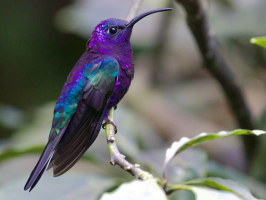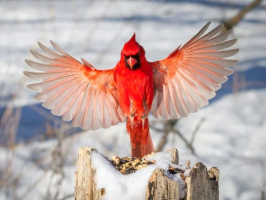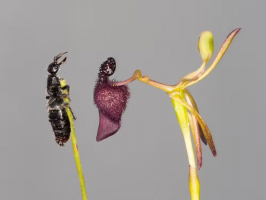Top 10 World's Beautiful White Birds
Birds are one the amazing pieces of nature. Especially birds with white feathers on them automatically catch the attraction of people around. These birds are ... read more...elegant, graceful, and stunning with their pure white plumage. Below is a list of the most beautiful white birds in the world, let's find out!
-
The Red-Vented Cockatoo (Cacatua haematuropygia), also known as the Philippine cockatoo and locally katala, abukay, agay, or kalangay, is a critically endangered species of cockatoo that is endemic to the Philippines though pressured by various environmental degradation and illegal pet trades, the population of the Philippine cockatoo is somehow growing owing to Katala Organization. It is roughly the size and shape of the Tanimbar corella but is easily distinguished by the red feathers around the vent. It is threatened by habitat loss and the cage-bird trade.
White undertail coverts with red tips, a yellowish undertail, and pale yellow underwings make up the entire plumage. Its length is 12 inches (30 cm) and its wingspan is 8.6 inches (22 cm). It makes a characteristic bleating call, as well as screeching or whistling noises that are common to most cockatoos. It is quieter than most cockatoos and much quieter than the umbrella cockatoo or Moluccan cockatoo.
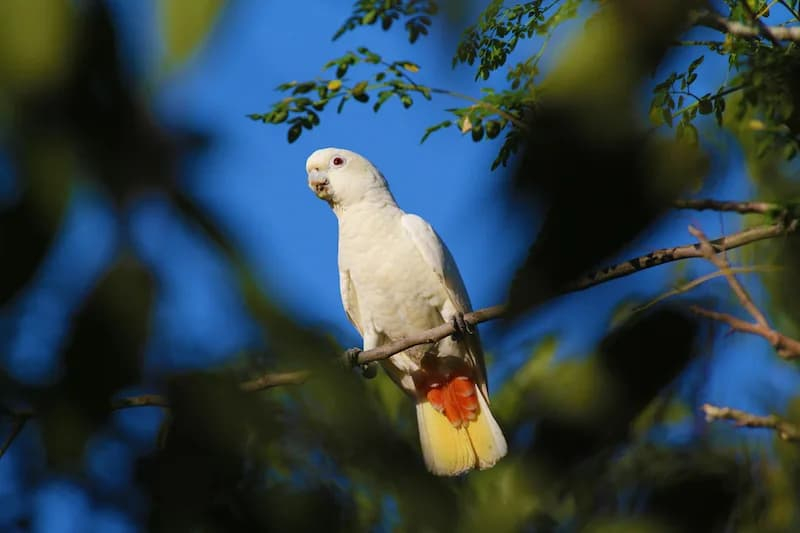
Rappler 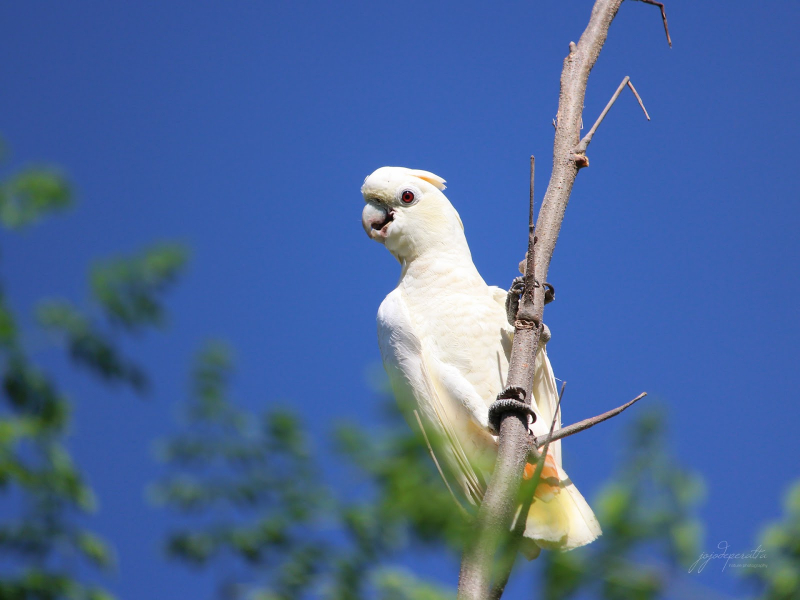
Palawan Wild Frontier -
Contrary to popular belief, White Peacocks are not albinos but rather a color mutation of the Indian blue peacock. Pigment and structure are what cause the White Peacock's feathers to be colorless. The odd lack of color in White Peacocks is caused by a pigment that is absent. Dark and obstructive pigment makes up the lacking pigment. After Indian Blue Peacocks, these are the Peacocks that are most in-demand in the UK. In India, white peacocks can be found in the wild. They were the first color mutation to be recognized. The eyes of the birds, which are totally white, are blue. The ocelli on the White Peacock's tail have a very faint discoloration.
The white plumage of the peacock is as white as snow and resembles a painting, making it incredibly distinctive. This bird is a true supermodel, constantly posing, flaunting its beauty, and strutting its stuff in front of everyone. They are not only among the most attractive creatures, but they are also among the most fascinating due to their unusual approach to mating rituals.
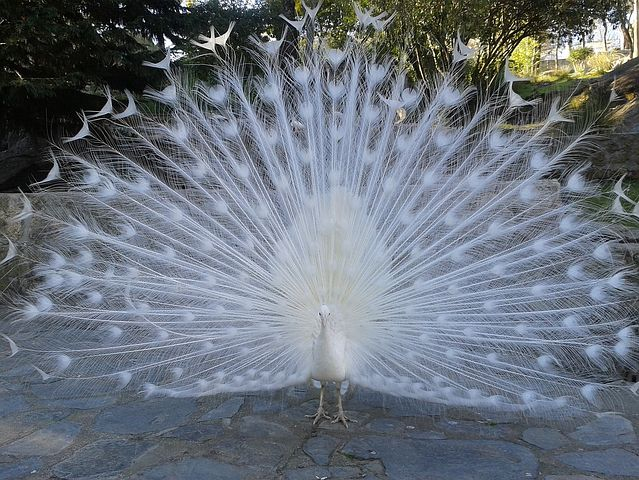
iStock 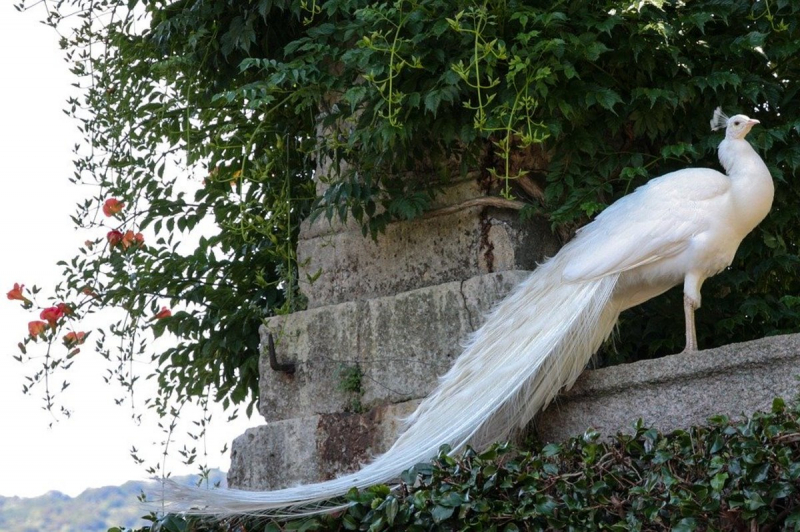
Owlcation -
The White Tern or common white tern (Gygis alba) is a medium-sized seabird with white overall plumage. The white tern can be found all along the eastern and southern coasts of Asia, from China to India, South Maldives, the islands of the Indian Ocean, and the coast of South Africa. Its range also extends over the Pacific Ocean, from the coasts of Chile and Colombia to New Zealand. It is also sporadically found in Mexico, Japan, Madagascar, Madagascar, and on a few islands in the Atlantic Ocean. It is a pelagic and epipelagic bird that inhabits coastal areas year-round and moves into forested areas during the breeding season.
A white tern's wingspan ranges from 76 to 87 cm. It has a large, black bill and white plumage. The white tern nests on coral islands, typically on trees with thin branches, but it can also be found on rocky ledges and man-made buildings. It feeds on small fish that it captures by diving. On Fregate Island in Seychelles, huge tortoises were seen stalking the bird. It is a long-lived bird, having been recorded living for 42 years.
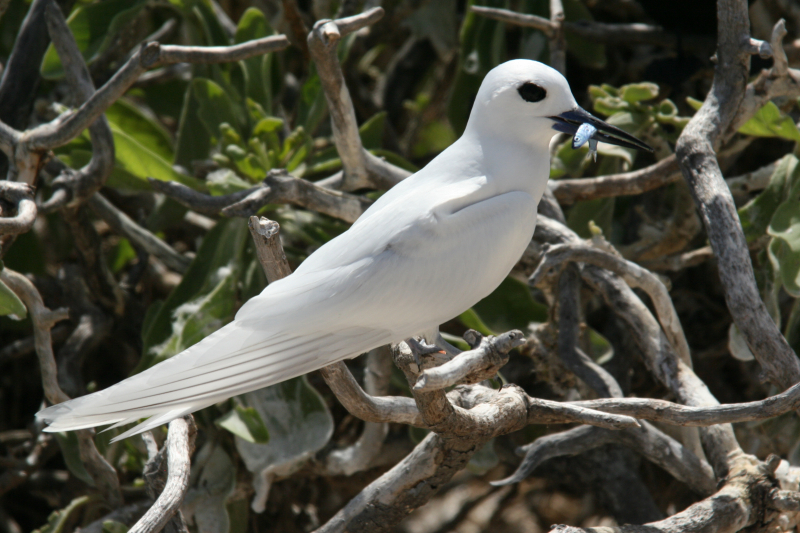
Wikipedia 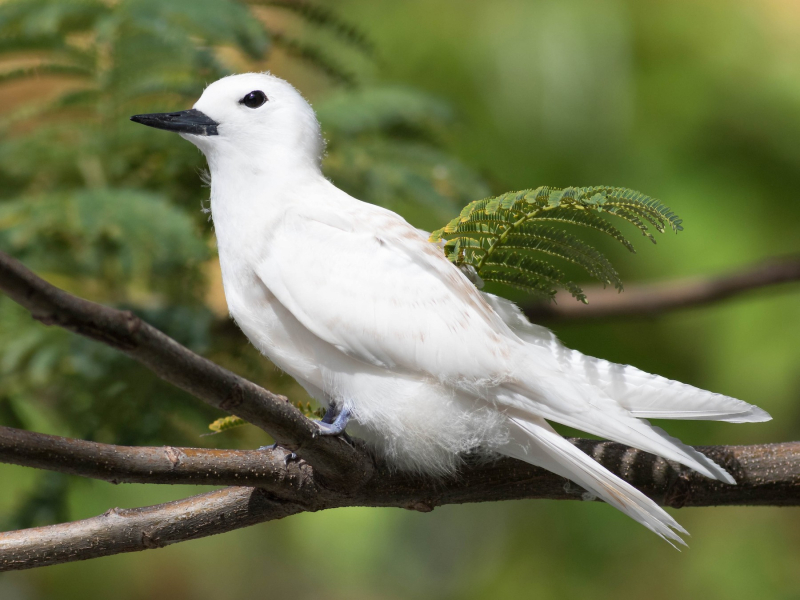
eBird -
The Snowy Owl (Bubo scandiacus), also known as the polar owl, the white owl, and the Arctic owl, is a large, white, owl of the true owl family. In vast, treeless regions known as tundra, these huge owls spend the majority of their time. On the ground or on small poles, snowy owls perch. They wait patiently there while hunting for prey. Lemmings, tiny rodents that resemble mice, are their preferred prey, but they also hunt other small rodents, rabbits, birds, and fish.
Despite having great vision, snowy owls cannot see their prey when it is hidden by snow or a heavy layer of vegetation. The owl uses its other great sense - hearing to catch those prey. Snowy owls typically fly close to the ground when in flight. They fly toward their prey after seeing it and share it with their enormous, sharp talons, or claws, on their feet. The snowy owl is active throughout the day, especially in the summer, unlike most owls who sleep during the day and hunt at night. They typically are at their busiest during dawn and dusk. Most snowy owl pairs remain together forever. Three to eleven eggs can be laid at once by female snowy owls in a ground nest. Snowy owls typically lay more eggs when food is plentiful than when it is scarce.
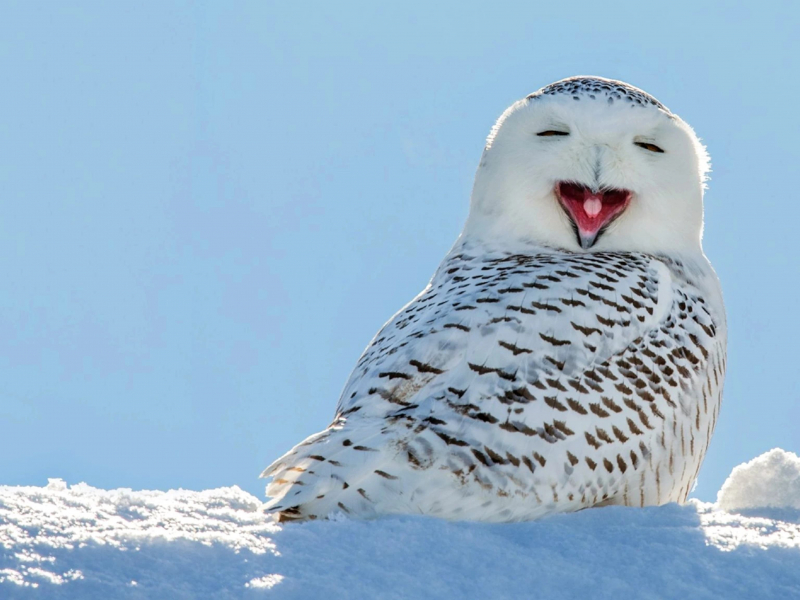
National Geographic Kids 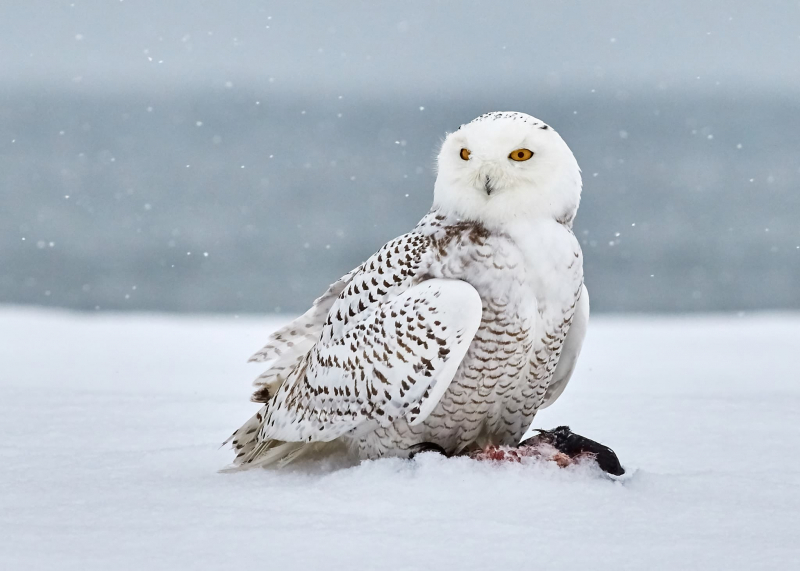
Wikipedia -
The Ivory Gull (Pagophila eburnea) is a small gull, the only species in the genus Pagophila. It breeds in the high Arctic and has a circumpolar distribution through Greenland, northernmost North America, and Eurasia. It takes fish and crustaceans, rodents, eggs, and small chicks but is also an opportunist scavenger, often found on seal or porpoise corpses. It has been known to follow polar bears and other predators to feed on the remains of their kills.
It is simple to recognize this species. Comparable in size to Larus gulls at 43 centimeters, it has a distinct, more pigeon-like shape, but the adult lacks the grey back of other gulls and has entirely white plumage. The legs are black, and the large beak is blue with a yellow tip. During the breeding season, the bill has a red tip, and the eyes have a fleshy, brilliant red eye-ring. Its flight call cry is a harsh, tern-like keeeer.
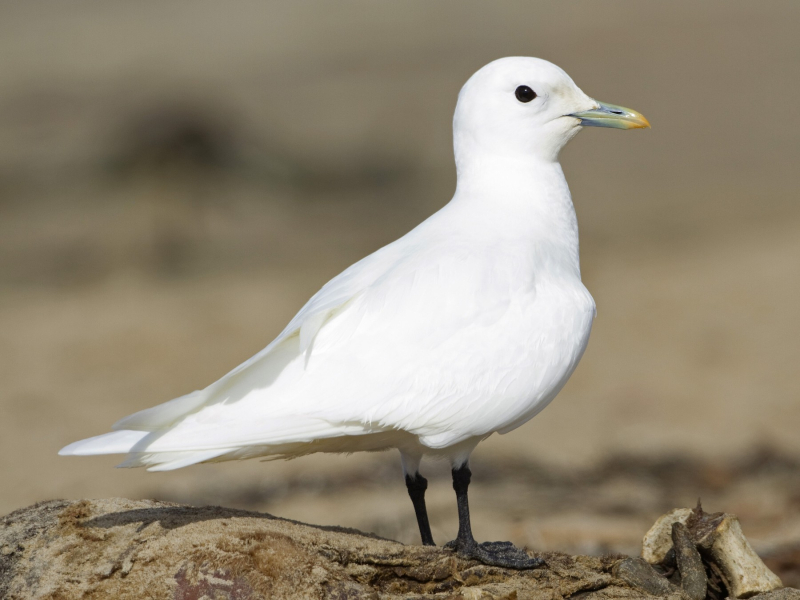
eBird 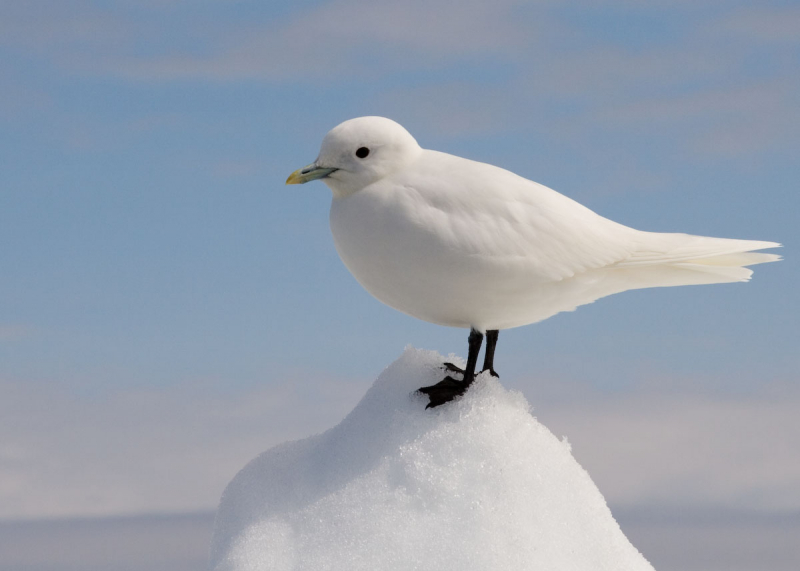
Wikipedia -
The Great Egret (Ardea alba), also known as the common egret, large egret, or (in the old world) great white egret or great white heron is a large, widely distributed egret, with four subspecies found in Asia, Africa, the Americas, and southern Europe, recently also spreading to more northern areas of Europe. Distributed across most of the tropical and warmer temperate regions of the world, it builds tree nests in colonies close to water.
The Great Egret is a large heron with all-white plumage. The great egret can be identified from other white egrets by its yellow bill, black legs, and feet, though during the breeding season the beak may turn darker and the lower legs paler. Delicate decorative feathers are carried on the back in breeding plumage. Juveniles resemble nonbreeding adults; males and females have the same appearance. Differentiated from the intermediate egret (Mesophoyx intermedius) by the gape, which extends well beyond the back of the eye in case of the great egret, but ends just behind the eye in case of the intermediate egret.
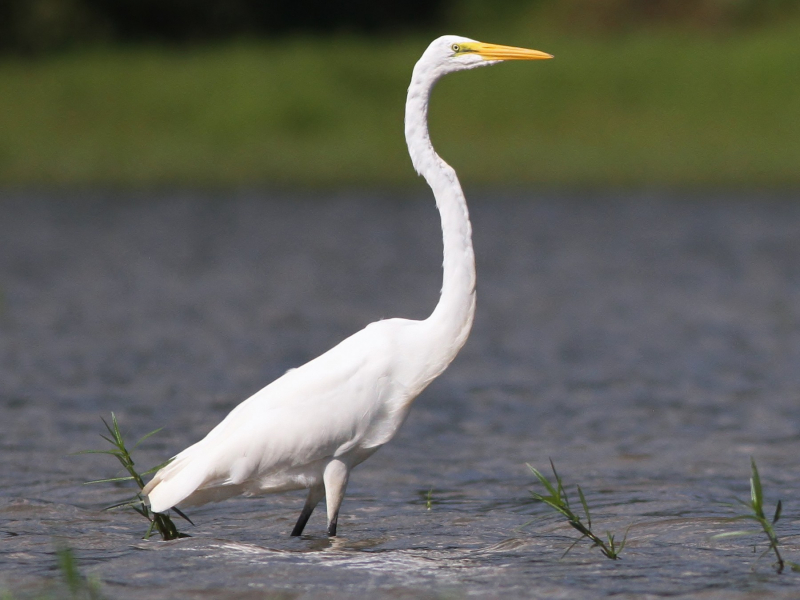
eBird 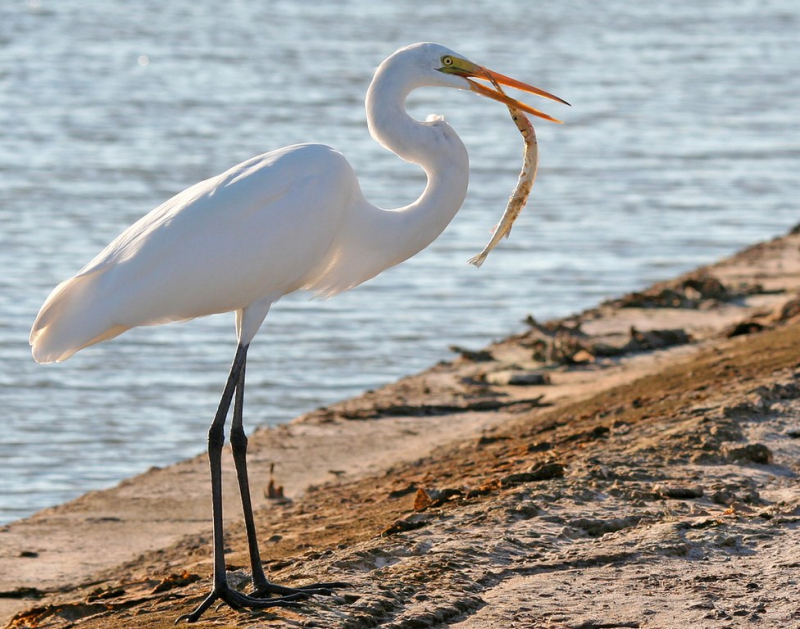
Wikipedia -
The American White Ibis (Eudocimus albus) is a species of bird in the ibis family, Threskiornithidae. It is found from Virginia via the Gulf Coast of the United States south through most of the coastal new world tropics. This particular ibis is a medium-sized bird with a white overall plumage, a brilliant red-orange bill with a downward curve, long legs, and black wing tips that are typically only visible in flight. Males have longer bills and greater size than females.
The breeding range encompasses the shores of the Gulf, Atlantic, Mexico, and Central America. Outside of the mating season, the distribution includes a broader section of North America as well as the Caribbean. Along the coast of northwest South America, it is also found in Colombia and Venezuela. Numerous populations coexist and breed with the scarlet ibis in central Venezuela. Some specialists consider the two to be one species. Their primary feeding sources are tiny aquatic creatures like insects and tiny fish. Its preferred meal in most places is crayfish, however, it can alter its diet based on the environment and the availability of prey. Its primary method of foraging involves probing the bottom of shallow water with its beak in order to locate and seize its prey.
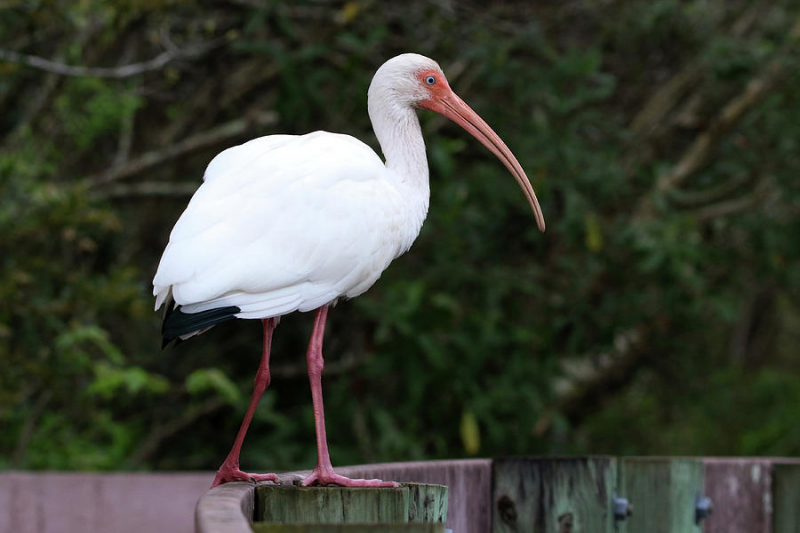
Bob Savage 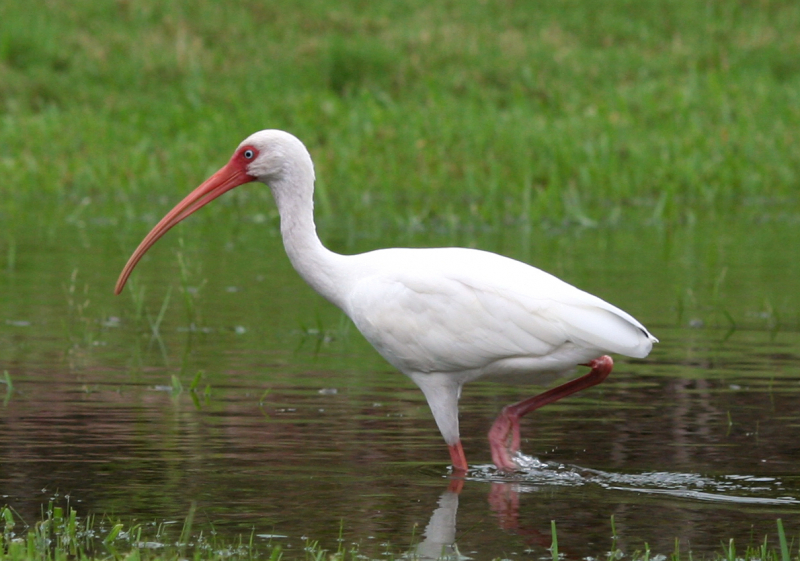
Wikipedia -
The American White Pelican (Pelecanus erythrorhynchos) is a large aquatic soaring bird from the order Pelecaniformes. It breeds in interior North America, moving south and to the coasts, as far as Central America and South America, in winter. Unlike the brown pelican (P. occidentalis), the American white pelican does not dive for its food. Instead, it catches its prey while swimming. They like to come together in groups of a dozen or more birds to feed, as they can thus cooperate and corral fish to one another. When this is not easily possible – for example in deep water, where fish can escape by diving out of reach – they prefer to forage alone.
Until for the black primary and secondary remiges, which are scarcely noticeable except when flying, the plumage is almost totally dazzling white. The breast feathers are yellowish in color from early spring to mid-late summer, when breeding is ended. The upper head frequently takes on a grey color after molting into the eclipse plumage as blackish feathers develop between the tiny, wispy white crest. During the breeding season, the iris, the exposed flesh surrounding the eyes, the feet, and the enormous, flattened bill are all bright orange in color. On the top bill, about a third of the bill's length behind the tip, there is a laterally flattened "horn" during the breeding season. This is the only one of the eight species of pelican to have a bill "horn". The horn is shed after the birds have mated and laid their eggs. Outside the breeding season, the bare parts become duller in color, with the naked facial skin yellow and the bill, pouch, and feet an orangy-flesh color.
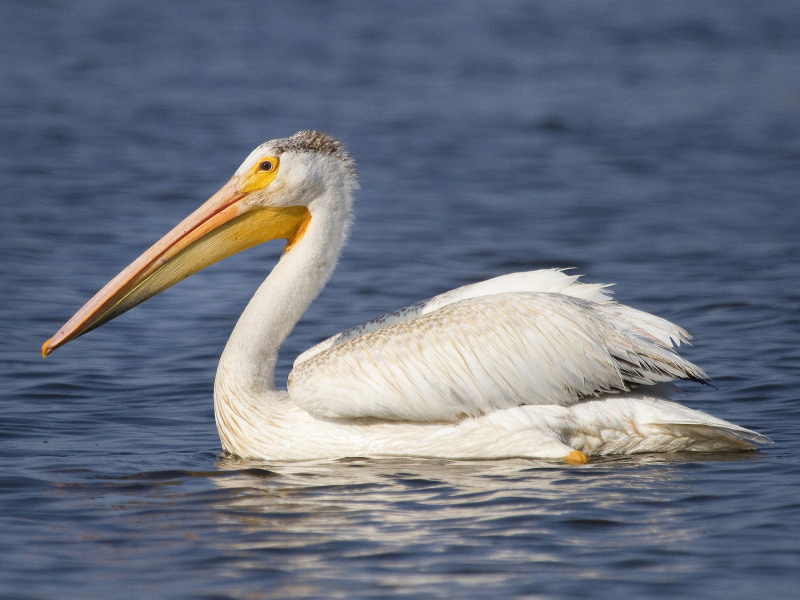
eBird 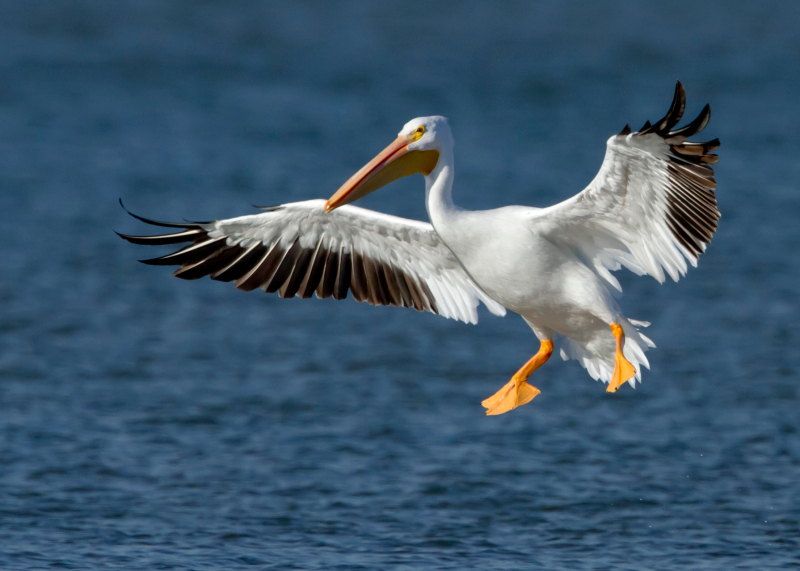
Wikipedia -
The Red-Tailed Tropicbird (Phaethon rubricauda) is a seabird native to tropical parts of the Indian and Pacific Oceans. One of three closely related species of tropicbird (Phaethontidae), it was described by Pieter Boddaert in 1783. It has almost all white plumage, a black mask, and a red bill, giving it the appearance of a tern on the surface. The feathers of the sexes are comparable. Adults have red tail streamers that are roughly twice as long as their bodies, as implied by the common name. There are four recognized subspecies, but there is no evidence of subspecies because of evidence of clinal variation in body size, with smaller birds in the north and bigger birds in the south.
The red-tailed tropicbird dives into the ocean to collect its prey, which is mostly flying fish and squid. On oceanic islands, nesting takes occurs in loose colonies; the actual nest is a scrape that can be discovered on a cliff face, in a fissure, or on a sandy beach. One egg is laid, and both sexes spend the next six weeks incubating it. Once the chick has hatched, the parents specialize their foraging: one forages for the chick for a few hours at a time, while the other undertakes far longer journeys to feed themselves. During incubation, the parents make lengthy food-foraging trips lasting about 150 hours.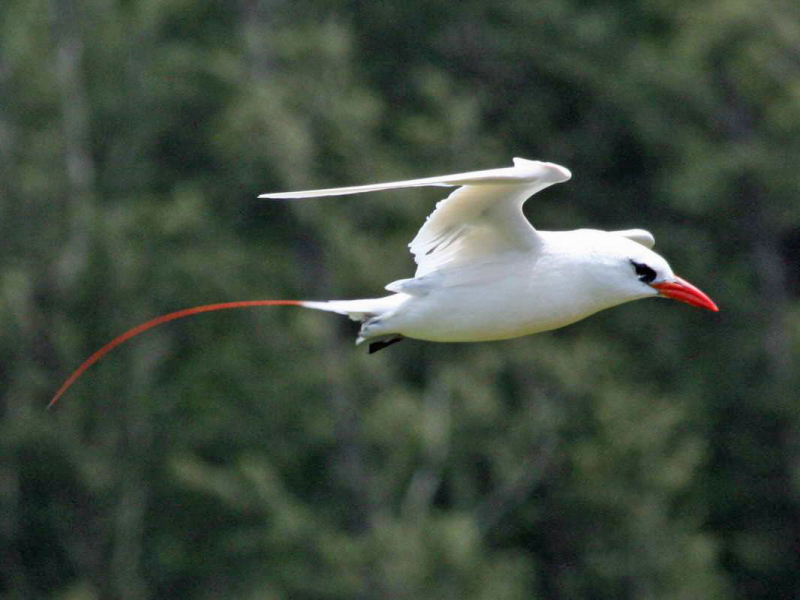
Wikipedia 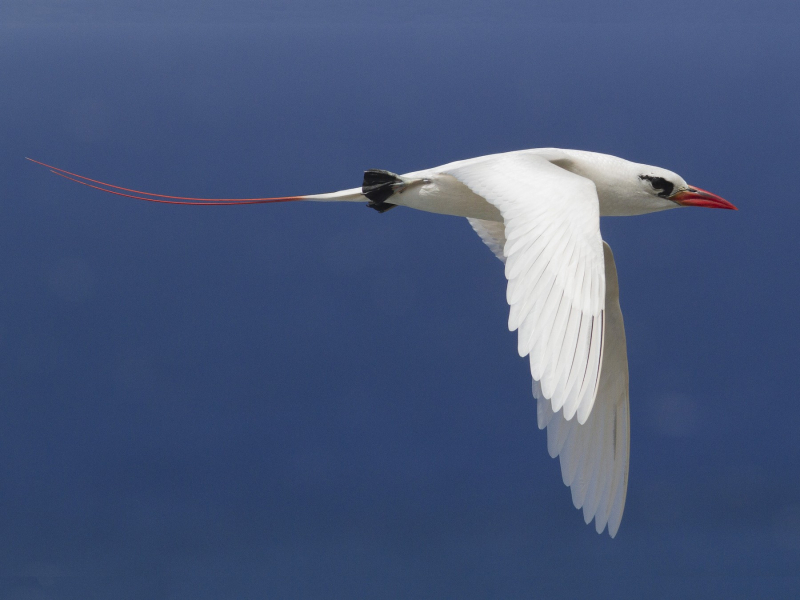
eBird -
The Snowy Egret (Egretta thula) is a small white heron. The genus name comes from Provençal French for the little egret, aigrette, which is a diminutive of aigron, 'heron'. The species name thula is the Araucano term for the black-necked swan, applied to this species in error by Chilean naturalist Juan Ignacio Molina in 1782. The snowy egret's plumes were once in high demand as hat ornaments for women. Because of the hunting for these plumes, the population of the animal was dangerously low. Now protected in the United States by law, under the Migratory Bird Treaty Act, this bird's population has rebounded.
Aside from the yellow lines, black legs, and brilliant yellow feet of adult snowy egrets, they are totally white. Long, shaggy plumes, known as aigrettes, hang from the nape and neck. Snowy egret juveniles have duller, more emerald-colored legs. The birds consume fish, crustaceans (including crayfish, crabs, and shrimp), insects, small reptiles (like lizards and snakes), snails, frogs, toads, and worms (especially earthworms and other annelids). They pursue prey in shallow water by sprinting or shuffling their feet, swinging their heads, flapping their wings, or vibrating their bills in an effort to flush the prey into view.
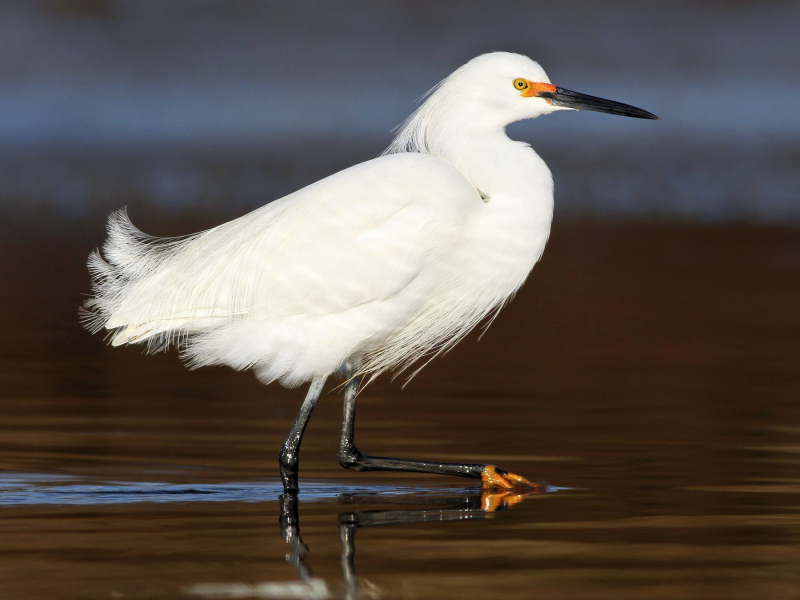
eBird 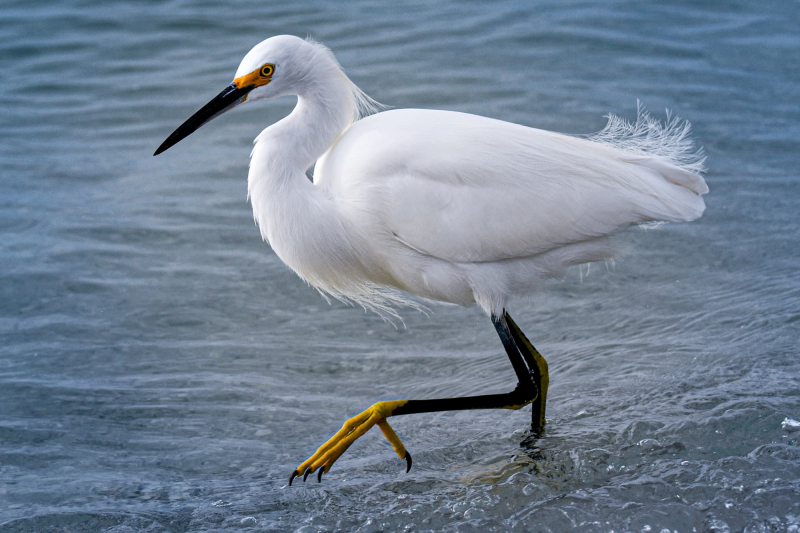
Your Observer












